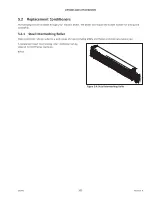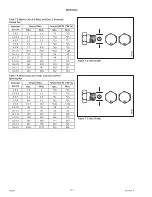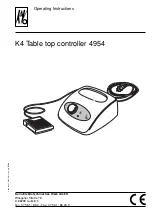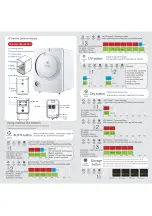
262391
198
Revision A
4.6
Hydraulics
Consult this section for general information on the hydraulic system. Detailed procedures for maintaining and repairing the
hydraulic system are beyond the scope of the operator
’
s manual.
4.6.1
Checking Hydraulic Hoses and Lines
Check the hydraulic hoses and lines daily for signs of damage or leaks. Replace any damaged or leaking hoses immediately.
Follow all applicable safety procedures while inspecting and maintaining the hydraulic system.
1001207
Figure 4.217: Hydraulic Pressure Hazard
WARNING
•
Avoid high-pressure fluids. Escaping fluid can penetrate the
skin, causing serious injury. Relieve the pressure from the
hydraulic system before disconnecting any hydraulic lines.
Tighten all hydraulic connections before applying pressure.
Keep your limbs away from pin holes and nozzles, which can
eject fluids with enormous force.
•
If any fluid is injected into the skin, it must be surgically
removed within a few hours by a doctor familiar with this
type of injury or gangrene may result.
1001205
Figure 4.218: Testing for Hydraulic Leaks
•
Use a piece of cardboard or paper to search for leaks.
IMPORTANT:
Keep hydraulic coupler tips and connectors clean. Allowing dust,
dirt, water, or foreign material to enter the system is the major
cause of hydraulic system damage. Do
NOT
attempt to service
hydraulic systems in the field. Overhauls must be performed in
an environment free of dust and debris.
4.6.2
Hydraulic Cylinders
The hydraulic cylinders do not require routine maintenance or service. Occasionally visually inspect cylinders for signs of
leaks or damage. If repairs are required, remove them and have them serviced by your MacDon Dealer.
















































